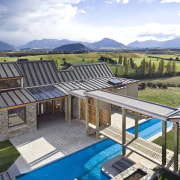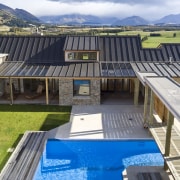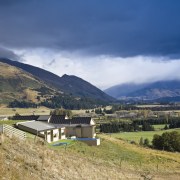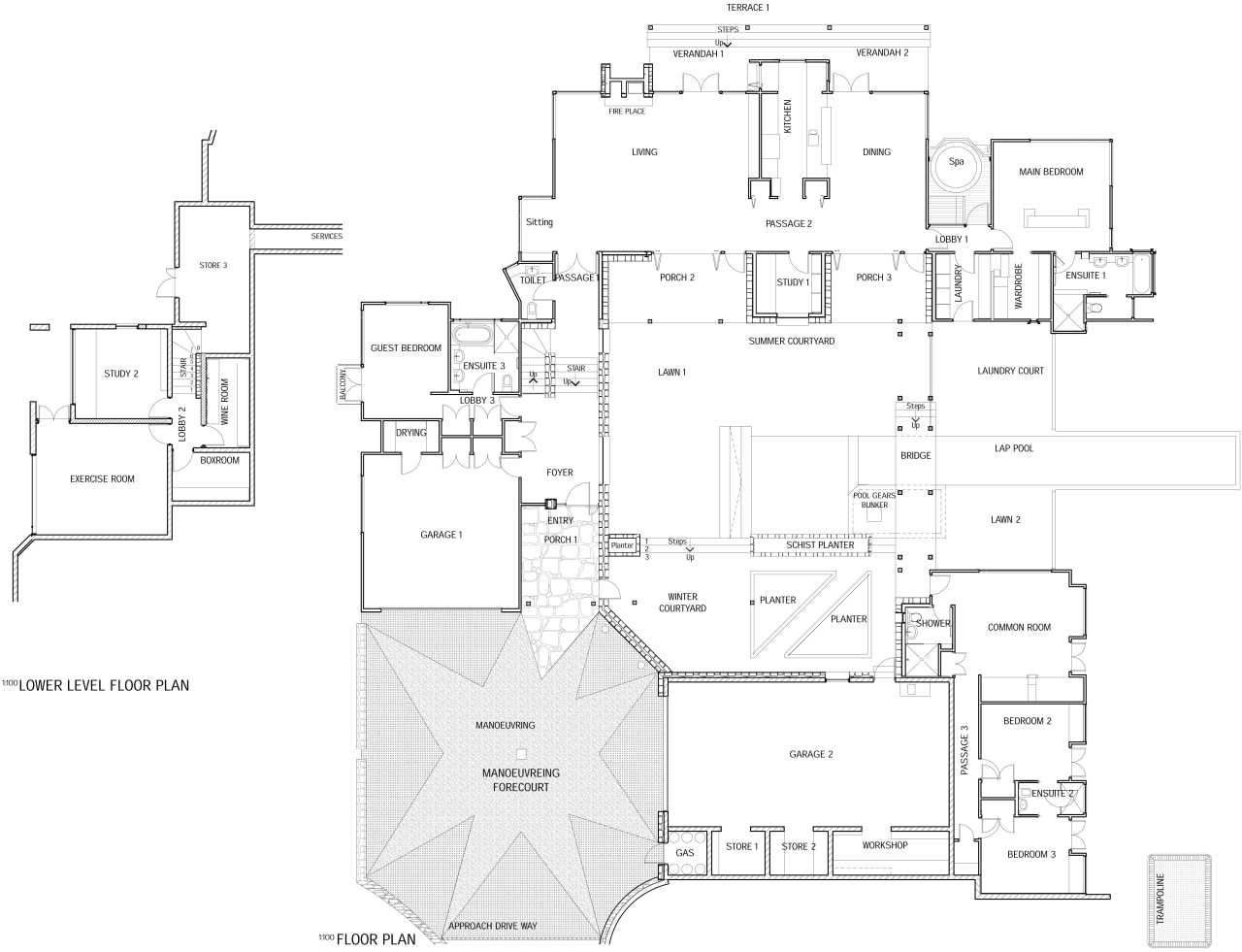Southern hospitality
This central Otago holiday home wraps around four sides of a sheltered courtyard to provide plenty of space and privacy for family and guests

Holiday homes are all about escape, not attention seeking, which is why they are often tucked out of sight with their backs to the road.
It's a different story inside, however, where the hidden elements are opened up to reveal private sanctuaries with spectacular views.
This Wanaka house sits on a spur, which was levelled to create a flat building platform. Nestled into the site, the house is almost concealed from the road the disguise enhanced by a grassed roof on the four-car garage, which doubles as a helipad.
Richard Sedgwick and Keith Wilson of Sedgwick Group Architects designed the house around a courtyard to provide a private, sheltered outdoor living area.
"From the approach road you can look across the top of the garage but see very little of the house beyond, which leaves the courtyard totally private," says Sedgwick. "Similarly, from the front door, you get just a hint of what lies beyond but the courtyard is still hidden. There is a sense of anticipation."
Wilson says the design evolved from the desire to maximise the sunlight and views of the lake and mountains the axis of the house was determined by the major mountain peaks and landforms. It was also shaped by the need for a degree of separation between the master suite, guest suite and children's/family quarters. The solution was to create two separate buildings connected by a covered bridge that spans a lap pool. The main living rooms, master and guest suites, and double garage are accommodated in the main building, while two bedrooms, bathrooms, a common room and four-car garage are in the second building.
Sedgwick says the bridge was designed to feel like a lightweight floating platform rather than a solid structure. Its strong horizontal lines are at right angles to the pool, which extends to cantilever out from the hill to enhance the visual connection with the distant landscape.
The geometric quality continues within the courtyard where schist and timber planter boxes are alternated with paved, timber and grassed areas. These provide summer and winter seating places that maximise sun and shade at different times of the year.
Sedgwick says the 400mm-thick solid Otago schist walls of the house are juxtaposed with plastered blockwork and crisp architectural detailing.
"The house has a very contemporary feel, but there are rustic touches that acknowledge the special visual characteristics of the region."
These textural elements include schist interior columns and walls, solid macrocarpa lintels and bandsawn timber stairs on the north terrace. Tasmanian oak joinery on the inside of the commercial-grade aluminium windows helps to visually soften the interior. Tasmanian oak is also used for flooring and built-in cabinets in the living and dining areas.
The living and dining areas open up to the outdoors in two directions to a 2m-wide covered veranda on the north side that maximises the expansive views, and to the sheltered courtyard on the south. The master suite also benefits from the sun and views.
The lower level includes an exercise room, second study and wine room, and storage spaces. Space is also provided off the two-car garage for an aprés-ski drying room.
Credit list
Builder
Pool construction
Paints and varnishes
Cladding
Tiling
Heating
Kitchen cabinets
Refrigerator and oven
Kitchen manufacturer
Pool surround
Roofing
Carpet
Lighting
Audio equipment
Benchtops
Story by: Colleen Hawkes
Photography by: Jamie Cobeldick Southern hospitality This central Otago holiday home wraps around four sides of a sheltered
Home kitchen bathroom commercial design
Diving into nature
Personality plus
Classic looks, contemporary efficiency















